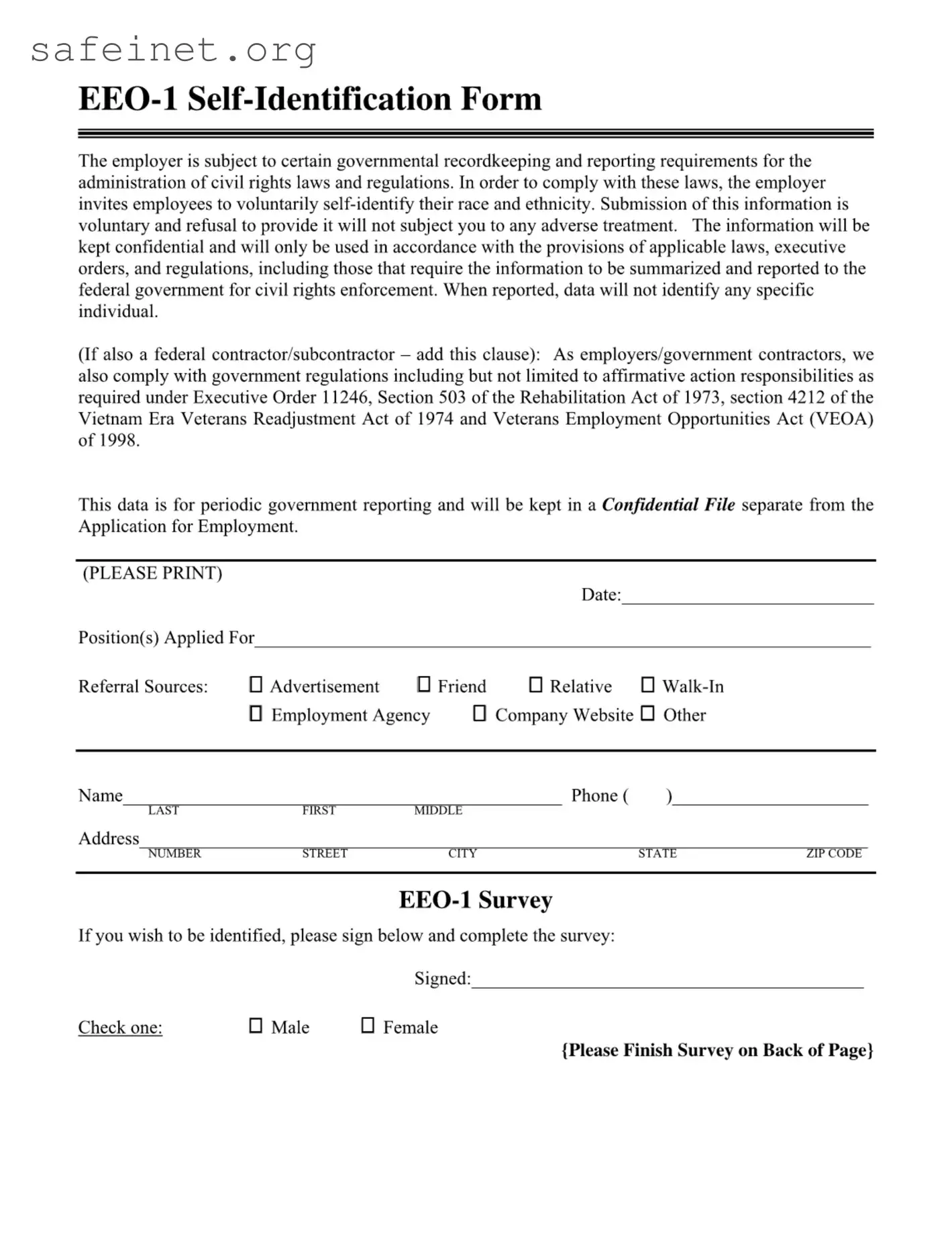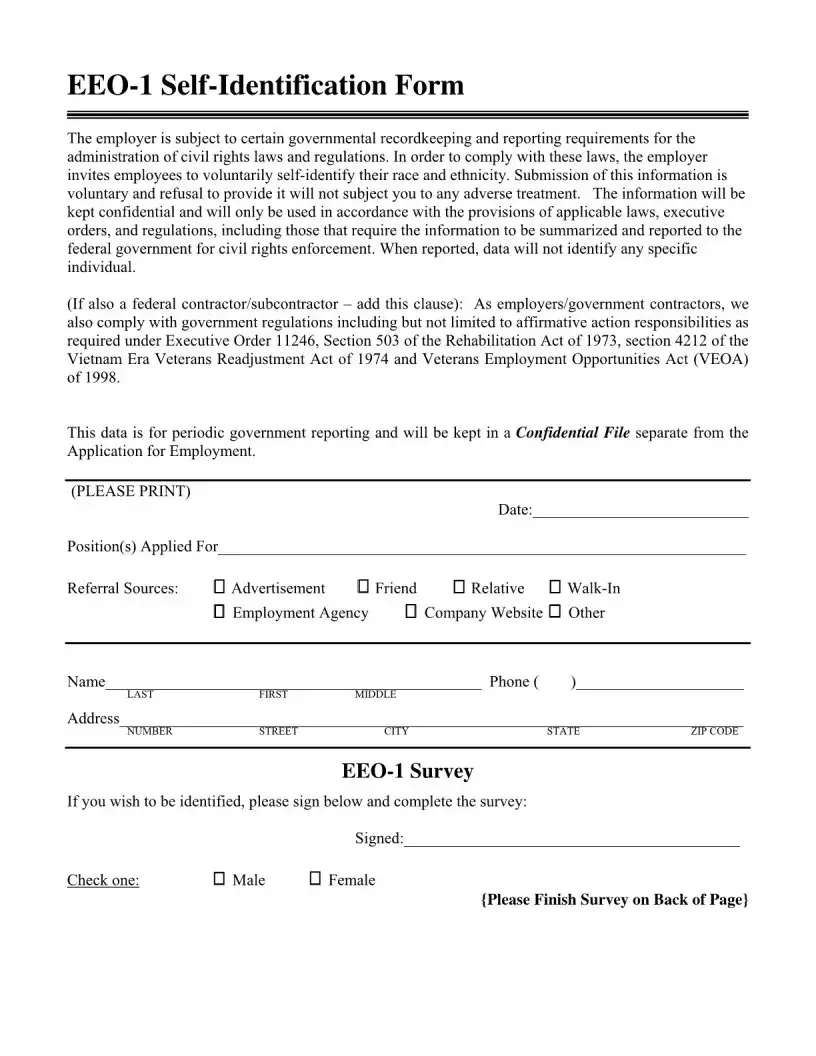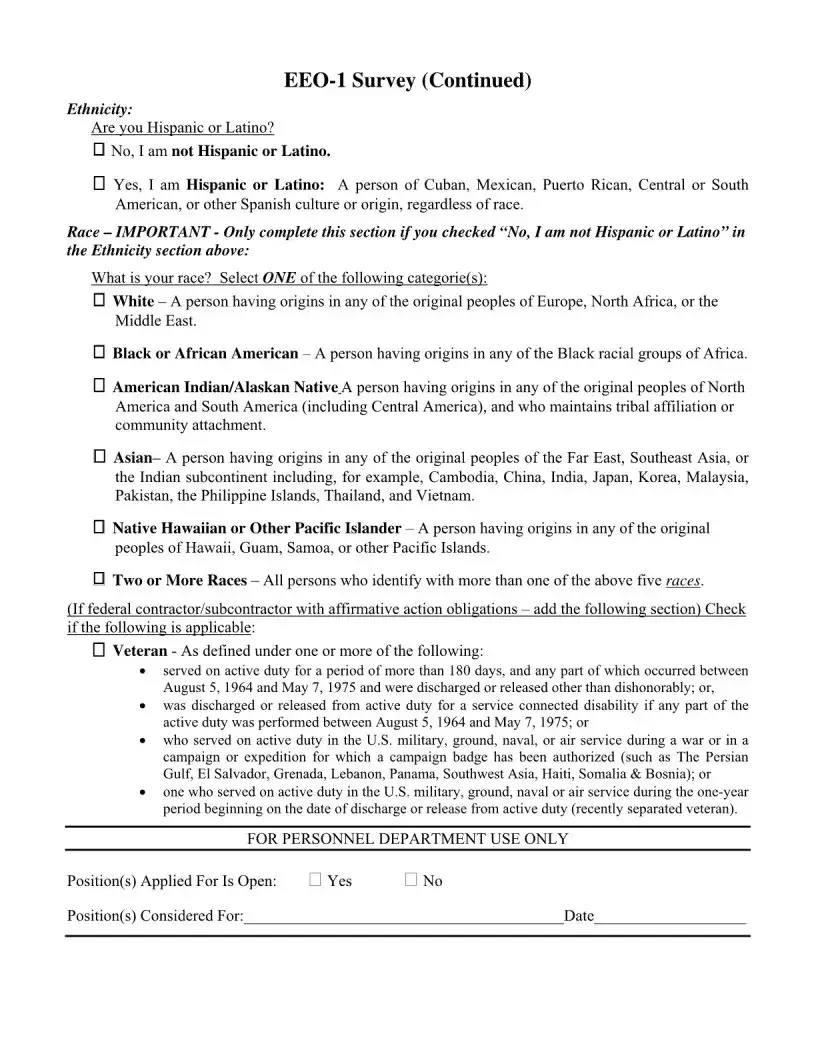The EEO-1 form shares similarities with the Job Application form. Both documents serve essential roles in the hiring process by collecting relevant information about candidates. A Job Application requires personal data, work history, and education, while the EEO-1 form specifically focuses on voluntary self-identification of race, ethnicity, and gender. This differentiation highlights the EEO-1's emphasis on diversity and compliance with civil rights laws, aiming to ensure equal employment opportunities for all individuals.
The Workforce Analysis form is another document that aligns with the goals of the EEO-1 form. Employers often use the Workforce Analysis to assess the makeup of their current employees by categories such as race, gender, and job classification. Like the EEO-1, the Workforce Analysis is designed to identify disparities in representation, ensuring that employers are compliant with affirmative action requirements. Both documents are crucial for monitoring and enhancing workplace diversity.
Another document reminiscent of the EEO-1 form is the Affirmative Action Plan (AAP). This plan outlines specific actions an employer intends to take to promote equal employment opportunities and address historical imbalances faced by marginalized groups. The AAP complements the EEO-1 by detailing proactive measures while the EEO-1 serves to report on the current workforce demographics, thus reinforcing an employer's commitment to diversity and inclusion.
The Equal Employment Opportunity Commission (EEOC) Charge Form is also similar in its intent. This form is used when individuals feel they have been discriminated against at work. While the EEO-1 reports aggregate data for compliance, the EEOC Charge Form deals with specific complaints, allowing individuals to seek redress. Both documents operate within the framework of civil rights laws, helping to protect employees' rights and ensure fairness in the workplace.
The I-9 Employment Eligibility Verification form exhibits parallels with the EEO-1 form as well. The I-9 is used to verify an employee's identity and authorization to work in the United States. Though its purpose lies in immigration compliance, the I-9 may intersect with EEO-1 considerations, as both are critical in creating an equitable hiring process. Employers must ensure that they do not discriminate based on national origin while verifying employment eligibility.
Similar to the EEO-1 form is the VETS-4212 Report, which is used by federal contractors to provide information on their hiring efforts concerning veterans. This report focuses on the employment of veterans and aims to promote equal opportunities for those who have served in the military. Like the EEO-1 form, the VETS-4212 Report fosters accountability and transparency around diversity and inclusion initiatives, particularly regarding protected groups.
The OSHA Form 300, used for recording workplace injuries and illnesses, resonates with the EEO-1 form's intent to ensure a fair and just workplace. Both forms reflect a commitment to maintaining a safe environment for all employees. While the OSHA Form 300 documents incidents affecting health and safety, the EEO-1 highlights demographic characteristics, ensuring that all employees are treated equitably in the workplace regarding both health and opportunity.
The DOL’s Employee Benefits form is similarly aligned with the EEO-1 by focusing on the fair treatment of employees. This form details what benefits are provided and ensures that they are equitably distributed among employees. Employee benefits can significantly impact job satisfaction and retention, making it essential for employers to consider the needs of diverse groups, echoing the underlying principles of fairness inherent in the EEO-1 form.
Lastly, the FLSA Job Classification form relates to the EEO-1 in terms of how employees are categorized within the workforce. This form helps employers ensure compliance with labor laws, particularly concerning fair pay and working conditions. It underscores the importance of equitable treatment for all employees while facilitating reporting and recordkeeping initiatives, in line with the objectives outlined by the EEO-1 form focused on civil rights and equal opportunity.


